Dream the impossible dream: a sonic quest.
Plus some acoustic odds and ends for your enjoyment.
Welcome to the May edition of CLAMOR! It’s officially publication month for my book, and so I’m tackling one of the biggest noise question out there—why should we care? I also share a silent Memorial Day tribute and a compendium of noise explorations from Boston to Mumbai. Finally, there’s new research on sound and our cells, a bipartisan bill to control data center noise gets vetoed, and #ClamorDogs.
Tilting at Noise?
Examining the anti-noise endgame
In the spring and summer of 2020, as the Covid pandemic descended, roads, skies, and cities emptied, businesses and schools shuttered, and gatherings of every variety disappeared. Researchers measuring sound from different locations during this period found an average drop of somwhere between 4 to 6 decibels.
This hush was hardly universal, but the decibel reduction was widespread enough to say that Covid temporarily ushered in a quieter world. It’s also fair to say that people had mixed feelings about this acoustic reprieve. Yes, it was beautiful to hear so many birds and so little traffic. And yes, the quiet brought some solace and a welcome space for reflection. Nevertheless, the terrible disruption, hardship, and fear behind the decibel drop was inescapable.
I had just started work on Clamor, and my in-person reporting plans were upended, while the research and interventions I’d hoped to cover were canceled. I managed to get an 18-month extension on the book, and my noise reporting boiled down to a lot of reading and thinking. One thought percolated above the others: What was the goal of the fight against noise? And by extension, what was my goal in writing a book about the topic?
We share an increasingly crowded planet with more than 8 billion other people, and the anti-noise quest can seem quixotic when viewed through a historical lens. Consider the indomitable Julia Barnett Rice, one of New York City’s most famous noise battlers. In 1906, Rice launched a war on Hudson River tugboat whistles, which ultimately succeeded and blossomed into a citywide anti-noise crusade. But in that same decade, the Wright Brothers took their maiden flight at Kitty Hawk, and the first Model T rolled off a Detroit assembly line (hat tip to Les Blomberg, of the Noise Pollution Clearinghouse, for that historical tidbit).
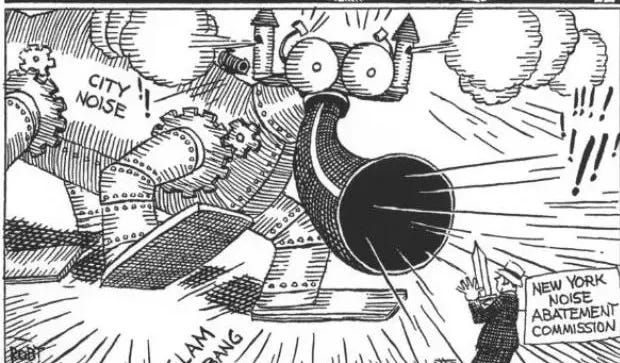
The more I read and thought, the more I was drawn to more positive takes on sound and noise that emphasized what they were for as much as what they were against. I met with hearing-protection advocates who celebrated favorite sounds and hearing’s vital role in connecting us with one another. I gravitated to researchers and acousticians who thought about how the mix of both wanted and unwanted sounds could help or hinder the functioning of the places we make—our offices, schools, hospitals, restaurants, and so forth.
Why does this matter? If you’re reading this newsletter, then you’re either related to me or you’re somebody who already understands the broad implications of sound and noise beyond personal annoyance. But that case still needs to be made more convincingly and to a much bigger audience. When people ask me why they should care about noise, my answer is that they probably already do. They likely care about noise deeply when the car alarm is blaring down the street at 3 AM, or when they’re sweating an important deadline in an open-office flooded with coworker chatter, or when they visit a loved one in a hospital who can’t sleep due to constant alarms. My argument is that to care about big issues such as fraying social connections, shattered attention spans, the epidemic of chronic stress, sleep disruptions, or degraded natural habitats, is to care about noise.
A few weeks ago, I had the chance to dig into all this with Nancy Nadler, deputy executive director of the Center for Hearing and Communication for their 30th International Noise Awareness Day (see their full line-up of interviews here).
As we near Memorial Day, a tribute to the fallen.
A sign greets visitors to the American Cemetery at Colleville-sur-Mer on the Normandy coast of France, where thousands of white grave markers blanket a bluff overlooking Omaha Beach. It reads:
Look how many there were. Look how young they were. They died for your freedom. Hold back your tears and keep silent.
Well, How Did I Get Here?
I pulled together my four magazine features about noise, which led to the book proposal for Clamor. Links and short descriptions follow, plus a bonus video from my noise reporting in India.
My introduction to the wide world of noise was this 2018 piece for the Boston Globe magazine profiling noise researcher Erica Walker (featured in the March newsletter) when she was a postdoc trying to understand noise beyond a decibel count. For the headline writer, Walker’s new noise app was the hook. For me, it was the possibility that we’d mismeasured noise for the last 100 years.
“The roar of military jets triggers a crusade for quiet” High Country News
The Hoh Rainforest is a lush, moss-covered sanctuary of quiet deep in Washington State’s Olympic National Park. The acoustic ecologist Gordon Hempton (pictured in the above photo by Shawn Parkin) wrote about this place in his book One Square Inch of Silence, before the quiet was shattered by new noise from U.S. Navy “Growler” jet training missions overhead.
Super-loud restaurants are a real problem, both for diners and ear-weary restaurant staff. In this feature, I focused on the acoustic design and engineering firm Meyer Sound, and its system for fine-tuning restaurant soundscapes, but I also covered less-expensive solutions from considering sound upfront in restaurant design, before it becomes a massive noise problem.
4. “The Fight to Curb a Health Scourge in India: Noise Pollution” Undark
A grant from the Pulitzer Center allowed me to visit Mumbai, Delhi, and a couple other locations in India to report on growing anti-noise activism in some of the noisiest places on Earth. Below is a video I took during the Ganesh festival in Ulhasnagar, an hour east of Mumbai. Even on non-festival days, Ulhasnagar is the noisiest urban area in the Indian state of Maharashtra, according to the National Environmental Engineering Research Institute (NEERI), which reported that traffic noise in the city averages 91.4 decibels!
Wait…What?!
Acoustic Odds and Ends
Your cells can hear! Scientist have identified about 190 sound-sensitive genes, including ones in a study published last month in the journal Communications Biology. Scientists at the University of Kyoto described how acoustic vibrations affected preadipocytes, which are fat cell precursors, by suppressing adipocyte differentiation, which is a step toward becoming full-fledged fat cells. Several years ago, these same researchers showed that sound waves could also suppress other genes that were instrumental in bone formation and wound healing.
Earlier this month, Virginia Governor Glenn Youngkin vetoed a bipartisan bill that would have required the builders of new data centers to submit site assessments on the project’s noise impacts on residents and schools located within 500 feet of the property, in addition to examining the impacts on water and agricultural resources, parks, historic sites and forestland (see February’s newsletter about the growing din of our digital migration).
A reminder that if you’ll be in the Boston/Cambridge area on May 21, 2025, please join me at the Harvard Book Store for a Clamor book launch event at 7 PM. I’ll be talking noise and soundscapes with Dan Gauger, one of the acoustic pioneers who created the first Bose noise-cancelling headphones and many other products you know and love. No ticket required.
Finally, dogs love Clamor! Nancy Nadler, my interviewer for International Noise Awareness Day, sent me this photo of her dog and a friend discussing my book:
I then asked other review-copy readers for pictures of their dogs enjoying Clamor, and received some great ones. In the months ahead, I’d love to post more photos of #ClamorDogs. Please, message me yours!
My dog, Roscoe, reads a few pages between naps while I work. When he wakes up, he quietly stands vigil and invites me to take a walk.
Thanks so much for reading CLAMOR! Please spread the word and subscribe for free to receive new posts and support my work.






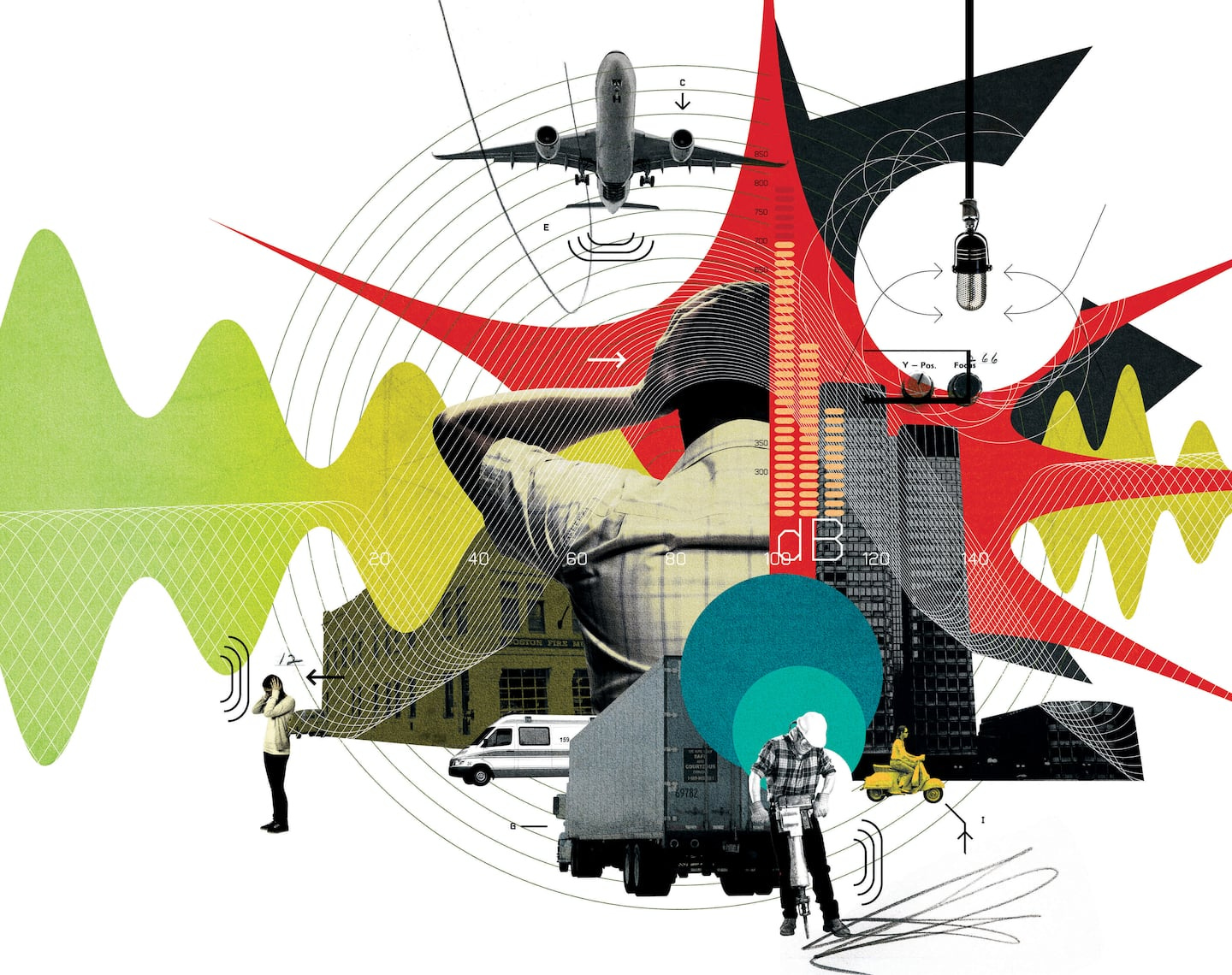
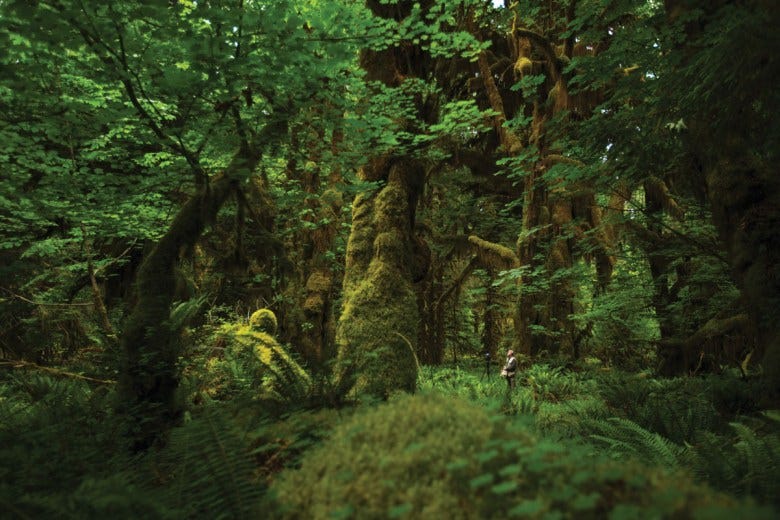

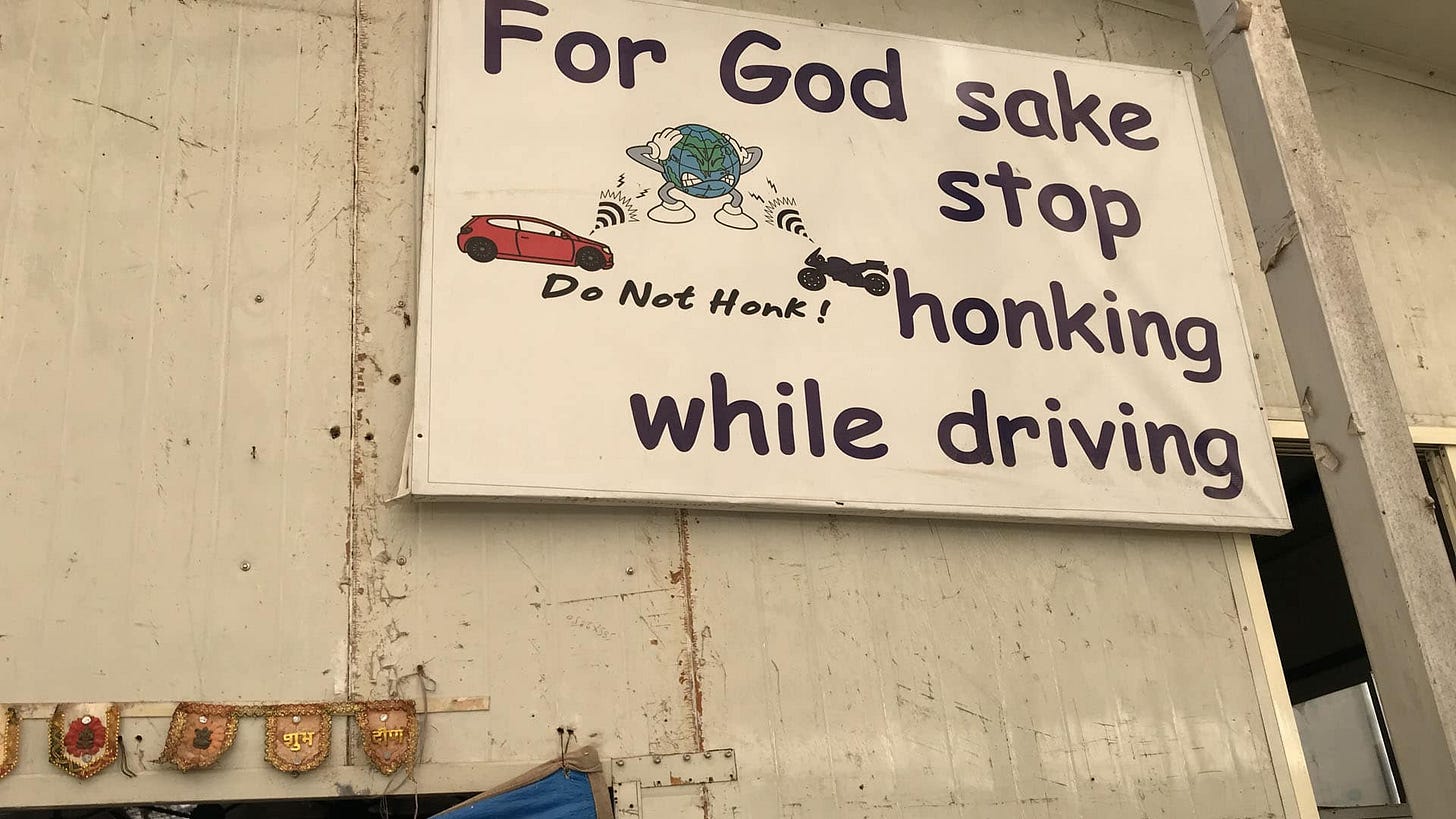


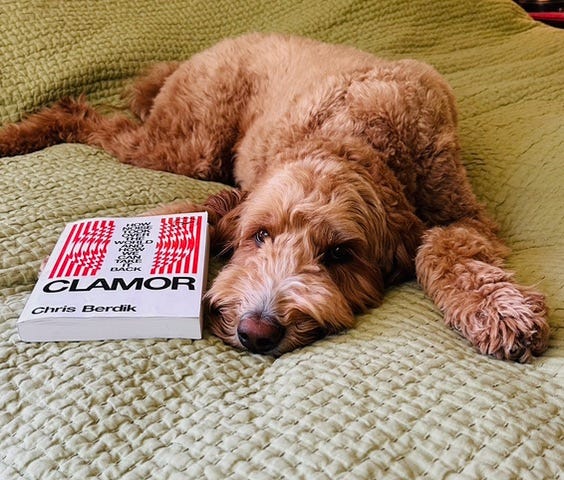
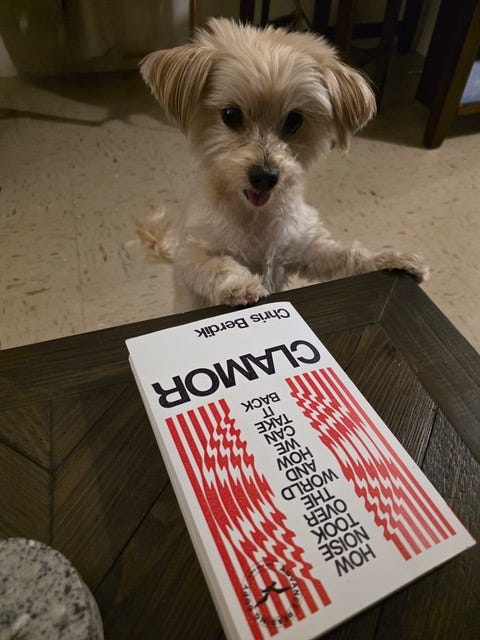
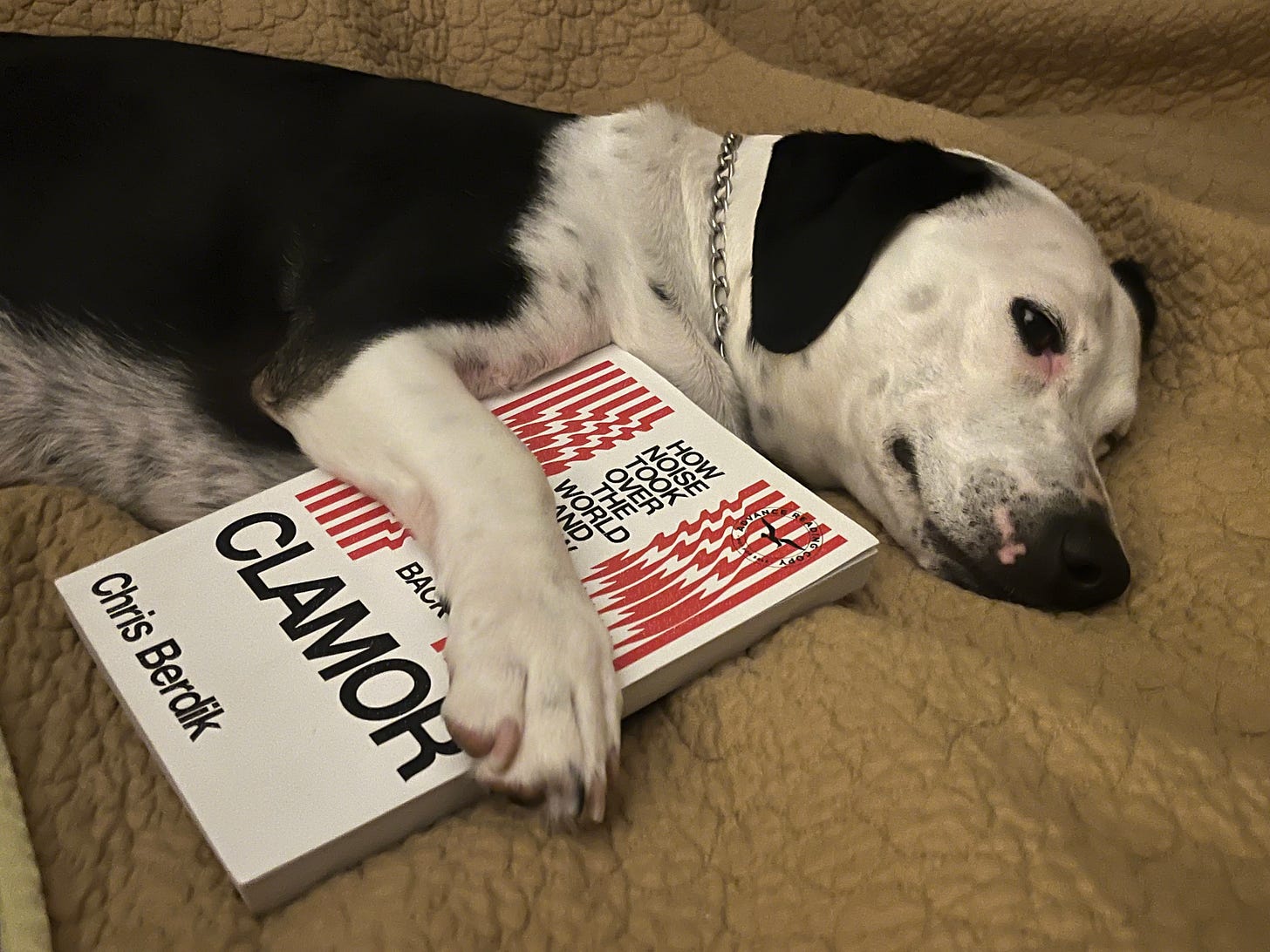
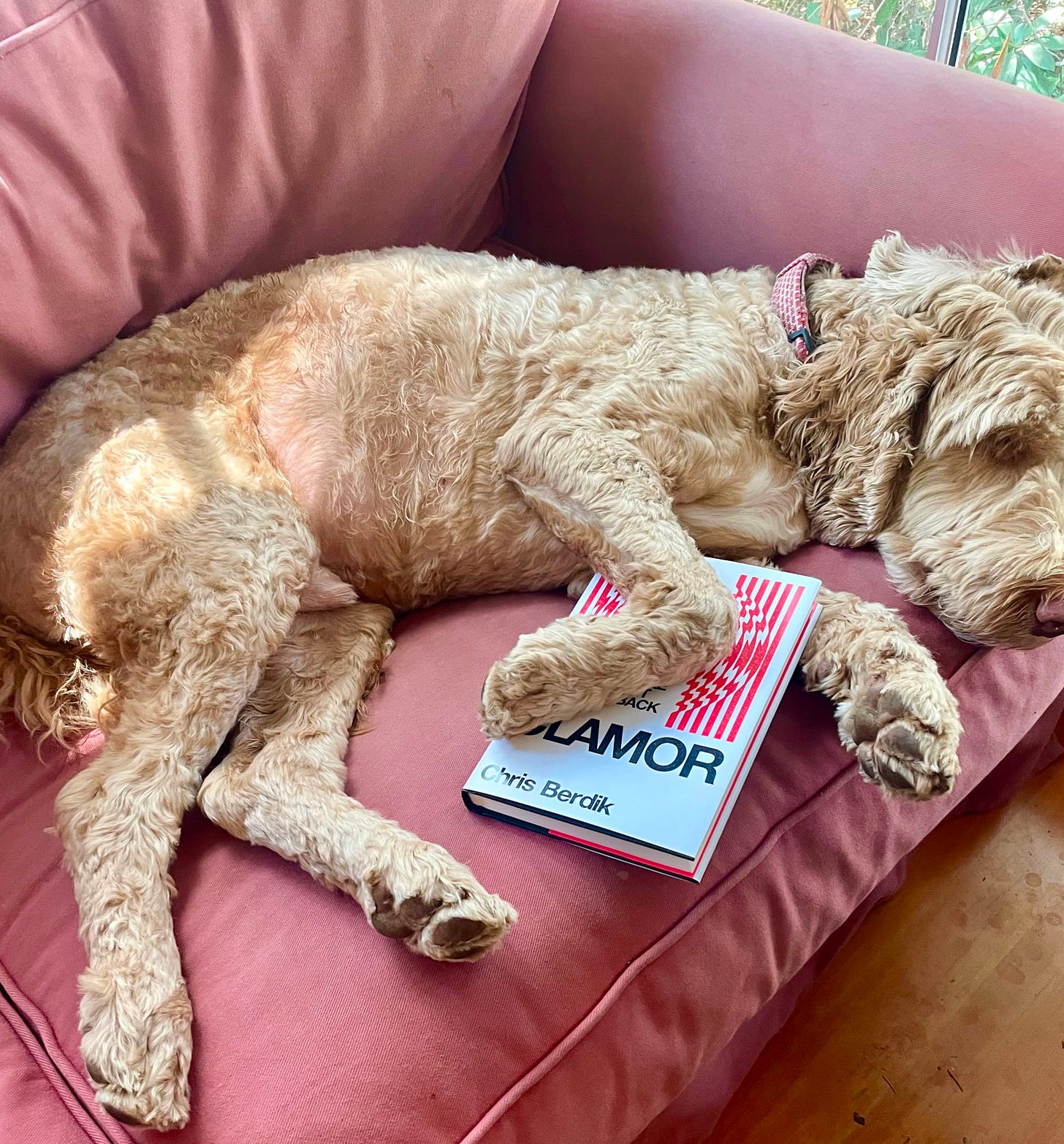
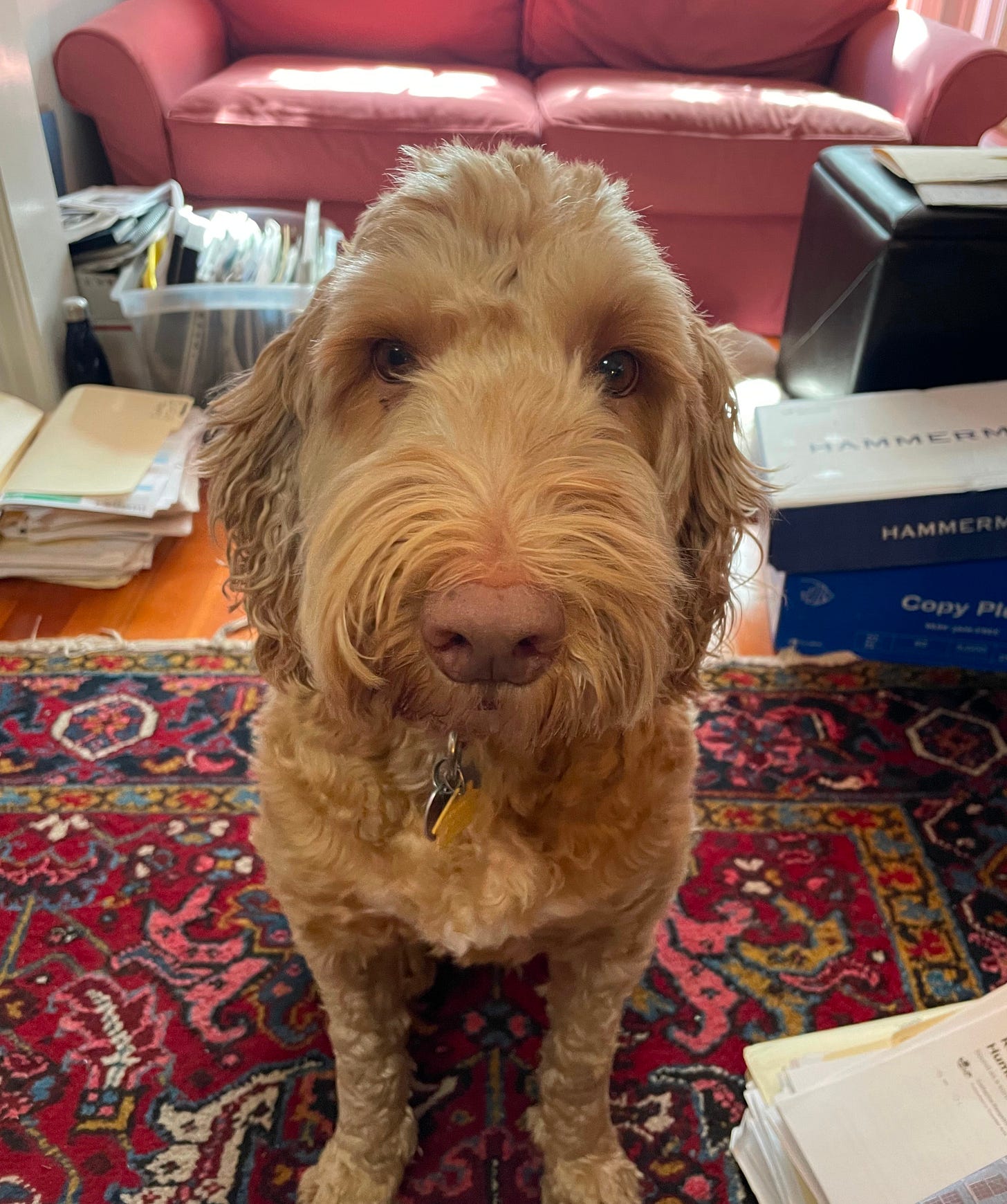
I received a copy of Clamor - I look forward to reading it this week. Thanks for being a voice for building awareness about noise pollution!